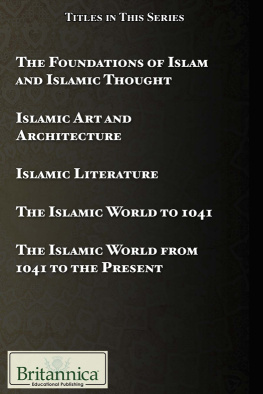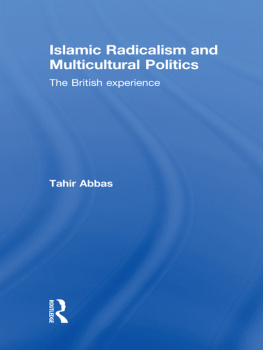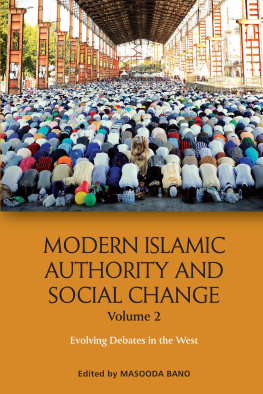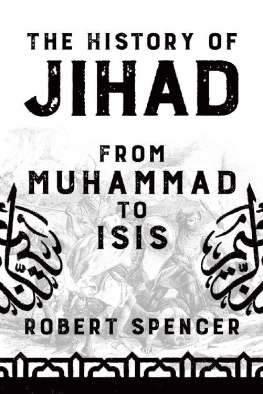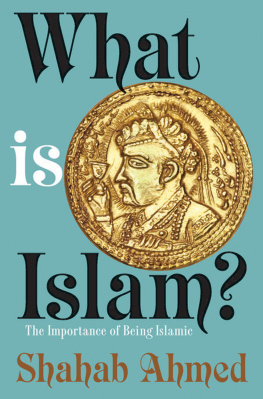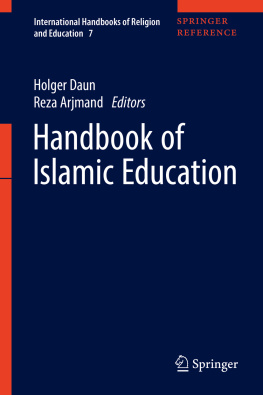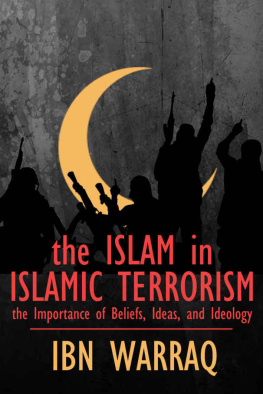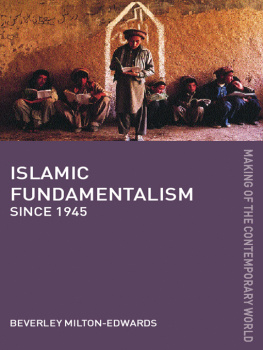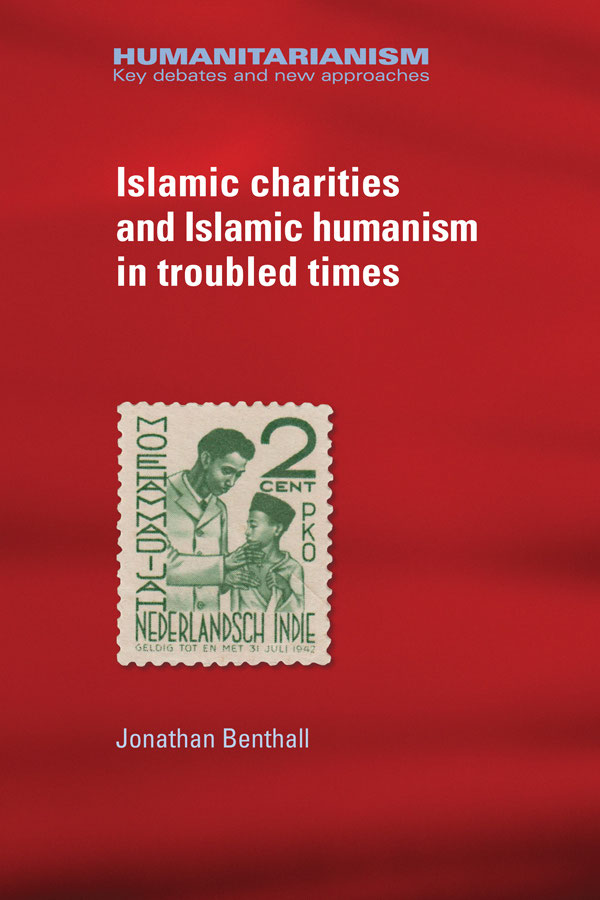Islamic charities and Islamic humanism in troubled times
Humanitarianism
This series offers a new interdisciplinary reflection on one of the most important and yet understudied areas in history, politics and cultural practices: humanitarian aid and its responses to crises and conflicts. The series seeks to define afresh the boundaries and methodologies applied to the study of humanitarian relief and so-called humanitarian events. The series includes monographs and carefully selected thematic edited collections which will cross disciplinary boundaries and bring fresh perspectives to the historical, political and cultural understanding of the rationale and impact of humanitarian relief work.
Calculating compassion: Humanity and relief in war, Britain 18701914 Rebecca Gill
Humanitarian intervention in the long nineteenth century Alexis Heraclides and Ada Dialla
Islamic charities and Islamic humanism in troubled times
Jonathan Benthall
Manchester University Press
Copyright Jonathan Benthall 2016
The right of Jonathan Benthall to be identified as the author of this work has been asserted by him in accordance with the Copyright, Designs and Patents Act 1988.
Published by Manchester University Press
Altrincham Street, Manchester M1 7JA
www.manchesteruniversitypress.co.uk
British Library Cataloguing-in-Publication Data
A catalogue record for this book is available from the British Library
Library of Congress Cataloging-in-Publication Data applied for
ISBN 978 1 784 99308 5 hardback
ISBN 978 0 719 09972 4 paperback
First published 2016
The publisher has no responsibility for the persistence or accuracy of URLs for any external or third-party internet websites referred to in this book, and does not guarantee that any content on such websites is, or will remain, accurate or appropriate.
Typeset by Out of House Publishing
For my grandchildren Violet, Alexander and Julia
Contents
I am grateful to the following for help in various ways over the last ten years: Akbar Ahmed, Michael Barnett, Jrme Bellion-Jourdan, Jean-Nicolas Bitter, Kaja Borchgrevink, Erica Bornstein, Martin van Bruinessen, Benot Challand, Bruno De Cordier, Didier Fassin, Michael Feener, Philip Fountain, Kay Guinane, Karin von Hippel, Jacob Higilt, Gustaaf Houtman, Levi McLaughlin, Marie Juul Petersen, Mayke Kaag, Robert Lacey, Christian Lekon, Raphal Liogier, Brian Pratt, Peter Redfield, Lawrence Rosen, Rupert Shortt, Janice Stein and Bertrand Taithe; as well as to the trustees and staff of many charities whose work I have tried to understand. Emanuel Schaeublin has been a particularly congenial colleague and constructive critic. Thanks also to the Department of Anthropology, University College London, for appointing me to an honorary research fellowship. The usual disclaimers apply.
Thanks are due to the publishers who have allowed material to be reproduced. The places of first publication are listed as follows.
Chapter 1: from Understanding Islamic Charities, edited by Jon Alterman and Karin von Hippel (Washington: CSIS Press), 2007.
Chapter 2: Anthropology Today 22: 4, August 2006 (London: Royal Anthropological Institute).
Chapter 3: Journal of Humanitarian Assistance, https://sites.tufts.edu/jha, 26 June 2008.
Chapter 4: The Graduate Institute of International and Development Studies, Geneva, an Occasional Paper published in 2008 by the Institutes Program for the Study of International Organization(s), which was dissolved in the same year.
Chapter 5: from Gulf Charities and Islamic Philanthropy in the Age of Terror and Beyond, edited by Robert Lacey and Jonathan Benthall (Berlin: Gerlach Press), 2014, resulting from a paper delivered at the Gulf Research Meeting at the University of Cambridge, July 2012.
Chapter 6: UCLA Journal of Islamic and Near Eastern Law 10, 201011, pp. 110.
Chapter 8: Asian Journal of Social Science 42: 12, 2014 (Leiden: Brill).
Chapter 9: Asian Ethnology, originally prepared for a special issue scheduled to appear in the second issue of 2016.
Chapter 10: Anthropology Today 21: 1, February 2005 (London: Royal Anthropological Institute).
Chapter 11: Times Literary Supplement, 1 June 2012.
Chapter 12: Times Literary Supplement, 10 September 2014.
Chapter 13: Times Literary Supplement, 12 October 2012.
Chapter 14: Times Literary Supplement, 29 January 2014.
Chapter 15: Anthropology Today 29: 4, August 2013 (London: Royal Anthropological Institute).
Chapter 16: Qaradawi, Yusuf Al-, in Oxford Encyclopedia of Islam and Politics, vol. 2, edited by Emad El-Din Shahin and Peri J. Bearman, 2014 (New York: Oxford University Press), pp. 2947.
Chapter 17: Times Literary Supplement, 10 December 2014.
Finally, my thanks to Manchester University Press and all who have contributed their skills at the various stages in the publication process.
Omissions to avoid repetition are marked [].
Arabic words and phrases have been transliterated except when words, including proper names, have become familiar in English. This leads to some unavoidable inconsistencies.
Few topics are as contested today as contemporary Islam. This book concentrates on some of its more attractive and positive features, without lapsing into a roseate view. All the chapters have been published previously. The first two thirds (Part I) are devoted to Islamic charities and humanitarianism, are mainly grounded in original research, and are fairly up to date with the state of scholarship in this field. The last third of the book (Part II) gives attention to what I have called Islamic humanism. Here (with the exception of Chapter 10) the emphasis is more on reviewing the work of other authors and should be read as tentative and provisional. I am well aware of the delicacy and complexity of the issues raised.
This Introduction has the dual role of providing a guide to the contents and of updating the books coverage. A new prefatory note has been added before each chapter, mainly to bring it up to date since first publication, but also sometimes to explain the circumstances in which it was written.
Part I, Chapters 1 to 9: Islamic charities
Turbulent times
I began to explore Islamic charities over twenty years ago. The origin of my interest was as follows. I had organized conferences on the refugee experience and societies in acute crisis in the early 1980s as director of the Royal Anthropological Institute, and for some fifteen years had sat as a volunteer on a number of committees of Save the Children UK. It was the over-hasty remark of the chairman of its overseas committee one day in 1991, when we were faced by an accumulation of humanitarian crises Journalists are parasites on human suffering that provoked the writing of a book called Disasters, Relief and the Media (Benthall 1993). This was a study of the symbiosis between humanitarian organizations and the media, including marketing techniques. In the preface to a second edition published much later (2009), I made more explicit the model inspired by Sidney Mintzs studies of global commodities of a stable system, a disastermediarelief chain, whereby representations of misery are exported from the South to the North as consumables, under the control of an oligopoly of media organizations and aid agencies, in return for aid flows. The stability is occasionally disturbed by a mega-disaster such as the 2004 Indian Ocean tsunami or the 2010 Haitian earthquake, then returns to normal. (In other cases, such as the forced migration resulting from the Syrian civil war since 2011, the system fails to engage with the scale and gravity of the emergency.) The book included snapshots of the cultures of three major agencies that made sophisticated use of the media: the International Committee of the Red Cross, Mdecins Sans Frontires (plus its French offshoots), and World Vision; it also included an analysis of the logos and promotional devices used by the major aid agencies.


